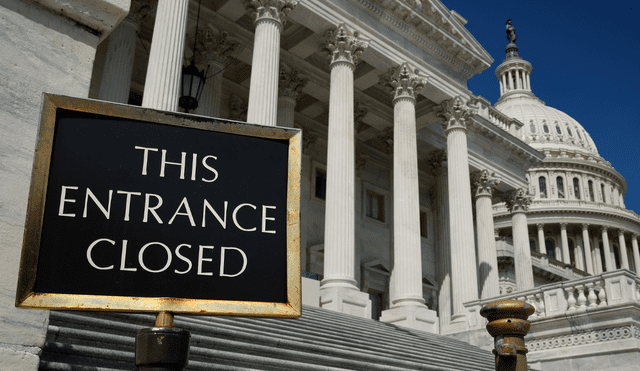Government shutdown risk in the US—What you need to be aware of
With a partial administration shutdown hours away, lawmakers face a critical decision that could disrupt essential services, delay paychecks, and harm the economy. What happens next? Here’s what you need to know about the looming crisis.

The United States is hours away from a partial government shutdown, with lawmakers facing a critical deadline. As Democrats decide whether to align with Republicans on a stopgap funding measure, uncertainty looms over the fate of essential services. The potential closure threatens to disrupt public operations, delay federal paychecks, and deal a significant blow to the U.S. economy, but what exactly is at stake, and how likely is it that the government will halt? Here’s what you need to know as the clock ticks down.
Senate Minority Leader Chuck Schumer is caught between fierce opposition from House Democrats and pressure from GOP (Grand Old Party) to pass a continuing resolution. Schumer has urged Senate politicians to approve the proposal, but many in his party see the move as a concession to the Trump executive’s policies. With the regime facing cessation at midnight on Friday, the consequences of this political impasse could reverberate across the country.
What happens during a government shutdown?
When national agencies suspend activities, state employees are furloughed, meaning they must stay home without pay. Essential functions like law enforcement and air traffic control continue, but many other are halted. National parks could close, passport processing might be delayed, and central units not deemed essential would cease operations. “A shutdown would give Doge the keys to the city,” said Schumer, referencing the potential for Elon Musk’s efforts to further reduce the national workforce.
The Anti-Deficiency Act of 1884 prohibits official entities from spending funds without approval from Congress, causing non-essential work to suspend until new capital is approved. If only some appropriations bills are passed, affected divisions halt their operations.
How will this closure impact the U.S. economy?
A government shutdown doesn’t just affect personnel—it sends ripples through the entire commerce. While vital duties continue, the stop of optional programs creates an economic vacuum. For example, the 2018-2019 suspension cost the U.S. fiscal landscape an estimated $11 billion, with $3 billion never recovered. “We can’t afford another shutdown,” said House Speaker Nancy Pelosi, urging her colleagues to avoid the impasse that could harm working-class families. If this resolution drags on, the market-based toll could be far greater.
Donald Trump's response to the looming conclusion is mixed, as he praises Schumer for “doing the right thing,” but also highlights the potential risks. “This could lead to something big for the USA,” Trump emphasized the need for unity amidst political gridlock. As the debate continues, the economic ramifications remain uncertain, and the longer the shutdown lasts, the more severe the effects on federal operations and public services.












